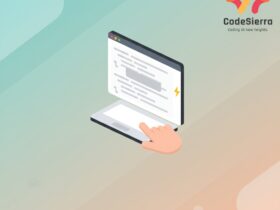Agentforce 2.0 brings autonomous AI agents into Salesforce — here’s a practical breakdown of where it helps, implementation considerations, and how to protect data quality and ROI.
What is Agentforce 2.0?
Agentforce 2.0 is Salesforce’s platform for autonomous AI agents that can reason, take actions, and operate across Salesforce records and connected systems. Beyond chat-based assistance, agents can act as persistent digital workers that automate repetitive tasks, handle customer interactions, and integrate with business workflows.
Key Industry Use Cases
E-commerce: Orders and Shipments
- Automatically track and update order/shipment status to reduce manual checks and customer queries.
- Handle refunds, exchanges and customer follow-ups 24/7, reducing case volume for teams.
- Synchronize order changes to Salesforce to keep sales and fulfillment aligned.
Financial Services: Personalized Support
- Respond to client queries, manage renewals, and automate billing tasks with conversational agents.
- Reduce operational costs by routing common tasks to agents while human experts focus on complex cases.
- Automate invoice tracking, payment confirmations, and exception handling for smoother finance operations.
High-Tech: Support & Onboarding
- Use agents to triage technical tickets and guide customers through troubleshooting steps.
- Provide 24/7 onboarding and installation support for software and hardware customers.
- Send real-time notifications about outages and sync case data back to Salesforce for full visibility.
Healthcare: Scheduling & Data Management
- Automate appointment booking and reminders while ensuring records are updated in the CRM.
- Speed up EHR-related data entry and reduce errors from manual paperwork.
- Enforce data privacy and security controls for sensitive health data when agents access records.
Implementation Considerations
- Data quality: Agents are only as good as the data they use. Use Data Cloud or strong data governance to avoid “dirty data” and hallucinations.
- AppExchange integrations: Native Salesforce apps (e.g., Slack) are supported, but third-party AppExchange tools may require verification or middleware for seamless integration.
- Cost & ROI: Evaluate the Agentforce pricing tiers (Salesforce Foundations included with some editions, Agentforce per-conversation pricing) and calculate ROI, including development and customization expenses.
Complementary Tools: Titan & Doc Automation
Titan is an example of a third-party app that complements Agentforce by providing no-code document generation, e-signatures, and forms inside Salesforce. Combined, agents can trigger document generation, collect customer inputs, and feed structured data back into Agentforce for richer, automated workflows.
Best Practices
- Start with a small, high-impact pilot (e.g., billing reconciliation, inbound order changes) to measure results and tune prompts and processes.
- Implement monitoring and guardrails: logging, human-in-the-loop workflows for risky actions, and regular audits of agent outputs.
- Invest in data governance and a feedback loop to retrain or refine agents as new cases emerge.
Conclusion: Why This Matters
Agentforce 2.0 represents a step from AI-assistants to autonomous digital workers — a shift that can dramatically reduce manual effort, speed customer response times, and unlock new automation possibilities inside Salesforce. For admins, developers, and business users, the focus should be on data quality, controlled rollouts, and integrating complementary tools (like document generation or forms) to maximize ROI while maintaining trust and security.






Leave a Reply